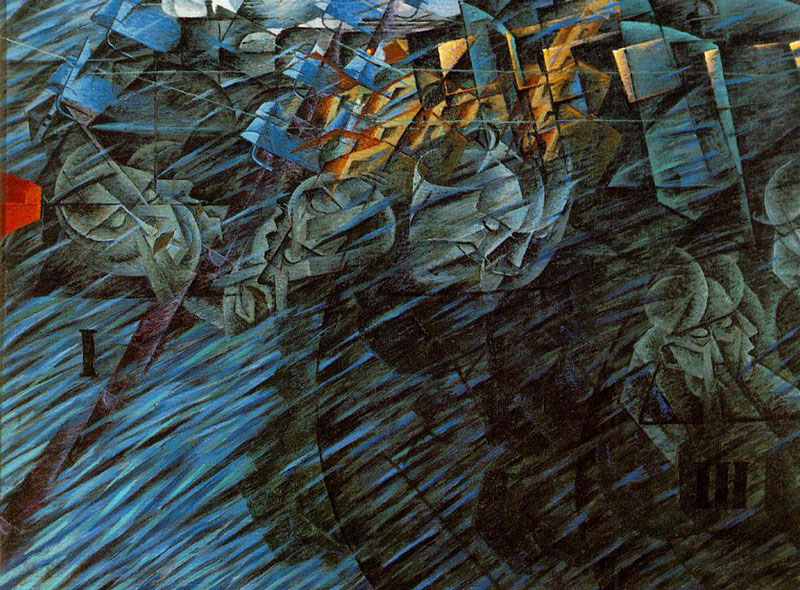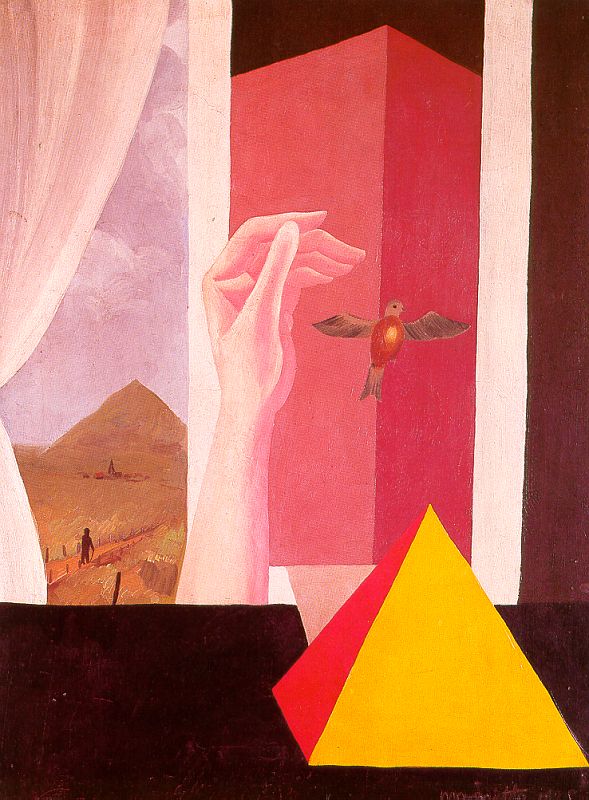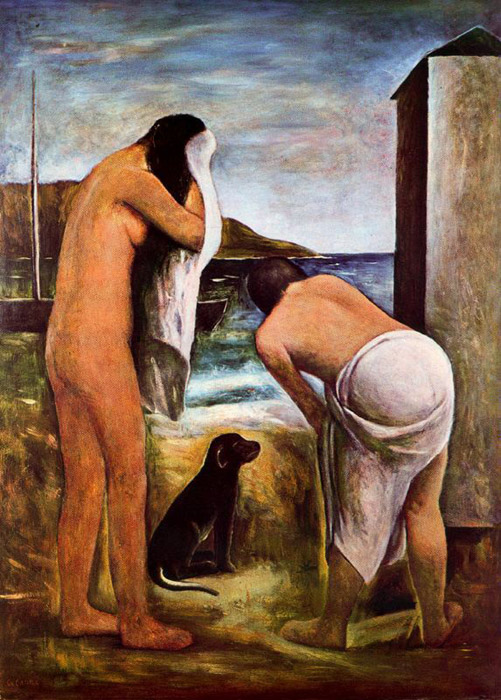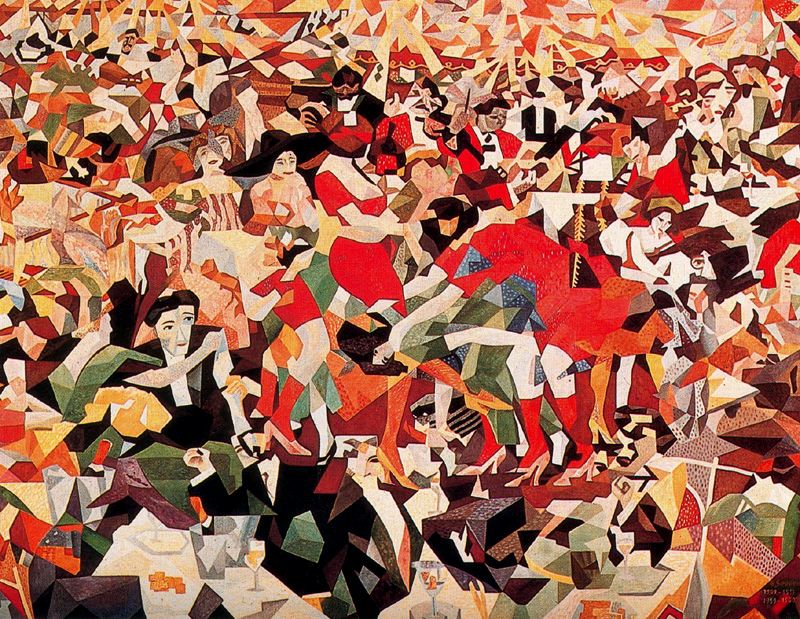Here are several important futurists and an example of their work. Magritte studied futurism the early 1920s and did several paintings in that style. He used elements of futurism until the early 1930s.
Umberto Boccioni ((born Reggio Calabria, Oct 19, 1882; died Sorte, Verona, Aug 17, 1916).
Italian sculptor, painter, printmaker and writer. As one of the principal figures of FUTURISM, he helped shape the movement’s revolutionary aesthetic as a theorist as well as through his art. In spite of the brevity of his life, his concern with dynamism of form and with the breakdown of solid mass in his sculpture continued to influence other artists long after his death.

States of Mind - Those Who Go 1911
Giacomo Balla (born Turin, Aug 18, 1871; died Rome, March 1, 1958).
Italian painter, sculptor, stage designer, decorative artist and actor. He was one of the originators of Futurism and was particularly concerned with the representation of light and movement. His personal interest in scientific methods of analysis contributed to both the practical and ideological bases of the movement. His oeuvre from the Futurist period overshadowed the work of later years.

Giacomo Balla: Feu d'artifice (Compare this to Magritte's 1925 Window)

The Window- Rene Magritte 1925
Carlo Carra (born Quarguento, Piedmont, Feb 11, 1881; died Milan, April 13, 1966).
Italian painter, critic and writer. He was apprenticed to a team of decorators at the age of 12, after the death of his mother. His work took him to Milan, London and Switzerland, as well as to the Exposition Universelle in Paris in 1900. He visited museums, and in Milan in 1906 he enrolled at the Accademia di Belle Arti di Brera, studying under Cesare Tallone. By 1908 he was arranging shows for the Famiglia Artistica, an exhibiting group. He met Umberto Boccioni and Luigi Russolo, and together they came to know Filippo Tommaso Marinetti and to write the Manifesto dei pittori futuristi (1910). Carrà continued, however, to use the technique of DIVISIONISM despite the radical rhetoric of Futurism. In an attempt to find new inspiration Marinetti sent them to visit Paris in autumn 1911, in preparation for the Futurist exhibition of 1912. Cubism was a revelation, and in 1911 Carrà reworked a large canvas that he had begun in 1910, the Funeral of the Anarchist Galli (New York, MOMA; see fig.). He had witnessed the riot at the event in 1904. The crowd and the mounted police converge in violently hatched red and black, as Carrà attempted the Futurist aim to place the spectator at the centre of the canvas. In the reworking he attempted to make the space more complex and the lighting appear to emerge from within.

Carlo Carra: Estate (note the odd building form on right and the white sheets/towels covering the face)
Gino Severini (born Cortona, 7 April 1883; died Paris, 26 Feb 1966).
Italian painter, mosaicist, stage designer and writer. One of the principal exponents of Futurism, he was an important link between French and Italian art. Although his most historically significant works were produced before World War I, he had a long career during which he continued to evolve his style, particularly in abstract schemes.

Gino Severini: El pam-pam de Monaco